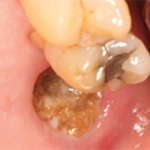Osteoporosis is a disease defined by low bone strength such that the bone fractures when exposed to unusually low stress. While many aspects of osteoporosis are not yet understood, research during the past 10 years has provided important information to identify individuals at high risk for the disease, institute screening, and offer treatment for patients who are at risk of fracture. We now have several effective bone-active agents that improve bone strength and reduce incident fractures in individuals at high risk for fracture. More effective bone-active agents in development may soon be approved.
While the data to support the screening and medical treatment of this disease are strong, management of osteoporosis in clinical practice is complicated by uncertainty in applying evidence from clinical trials to the care of individual patients. Compared with patients enrolled in trials, patients in clinical practice may have more comorbidities, less understanding of the disease, less motivation to adhere to the prescribed therapy, and financial concerns that—combined—can reduce the efficacy of the prescribed bone-strengthening agent.
In light of the challenges the clinician faces in diagnosing and treating osteoporosis, this article will review current osteoporosis screening techniques, approved medications and their optimal duration of use, sequential therapy, and secondary causes of osteoporosis that the rheumatologist may encounter.
Screening for Osteoporosis
In 1992, the World Health Organization (WHO) adopted a method for defining osteoporosis by using measurements of bone mineral density (BMD) obtained from dual energy X-ray absorptiometry (DXA) machines. The T score is defined as the number of standard deviations above or below peak bone mass obtained at about age 20. A T score of greater than -1.0 is normal, -2.5 to -1.0 is osteopenia, and below -2.5 is osteoporosis. The T scores, which were developed to assess the prevalence of low bone mass in the population, were not intended to identify subjects who might benefit from treatment with bone active agents. However, in randomized, controlled clinical trials that evaluated the efficacy of osteoporosis agents, women with T scores below -2.5 were enrolled to determine if agents could reduce the risk of new vertebral fractures.
A number of subspecialty societies—including the National Osteoporosis Foundation (NOF) and the Endocrine Society, among others—recommended that physicians and other healthcare providers offer treatment to prevent osteoporotic fractures if the patient had a T score less than -1.5 with risk factors, and less than -2.0 without risk factors. Clinicians have followed these recommendations, screening patients for osteoporosis and making treatment recommendations based on the BMD results. A number of new developments have made clinicians and policymakers question these recommendations. First, patients’ adherence to osteoporosis treatment if they have not experienced a fracture is surprisingly low. Second, a number of women and men who have T scores above the osteoporotic level can have fractures.

